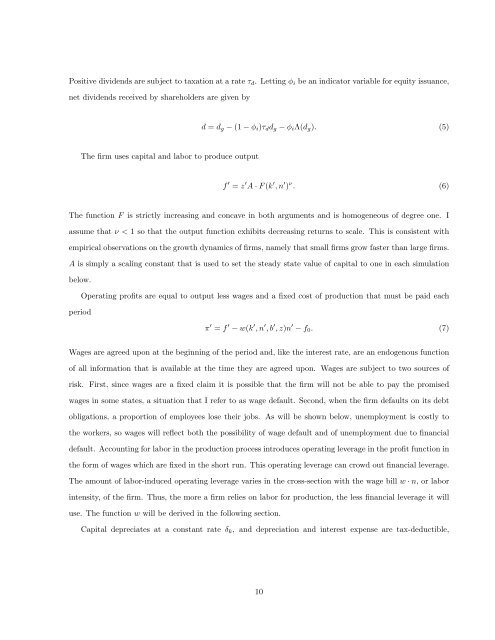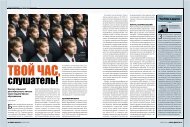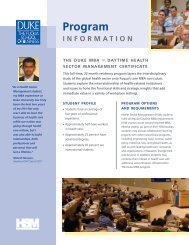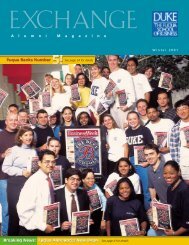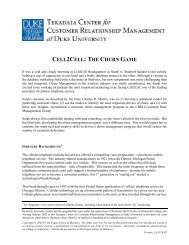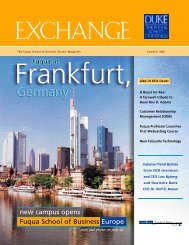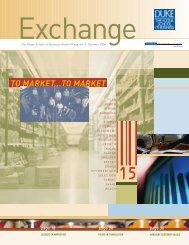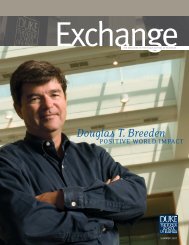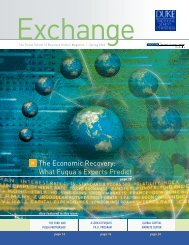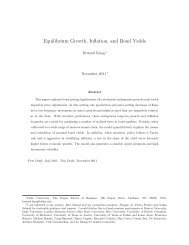A Structural Model of Human Capital and Leverage - Duke ...
A Structural Model of Human Capital and Leverage - Duke ...
A Structural Model of Human Capital and Leverage - Duke ...
You also want an ePaper? Increase the reach of your titles
YUMPU automatically turns print PDFs into web optimized ePapers that Google loves.
Positive dividends are subject to taxation at a rate τd. Letting φi be an indicator variable for equity issuance,<br />
net dividends received by shareholders are given by<br />
The firm uses capital <strong>and</strong> labor to produce output<br />
d = dg − (1 − φi)τddg − φiΛ(dg). (5)<br />
f ′ = z ′ A · F (k ′ , n ′ ) ν . (6)<br />
The function F is strictly increasing <strong>and</strong> concave in both arguments <strong>and</strong> is homogeneous <strong>of</strong> degree one. I<br />
assume that ν < 1 so that the output function exhibits decreasing returns to scale. This is consistent with<br />
empirical observations on the growth dynamics <strong>of</strong> firms, namely that small firms grow faster than large firms.<br />
A is simply a scaling constant that is used to set the steady state value <strong>of</strong> capital to one in each simulation<br />
below.<br />
period<br />
Operating pr<strong>of</strong>its are equal to output less wages <strong>and</strong> a fixed cost <strong>of</strong> production that must be paid each<br />
π ′ = f ′ − w(k ′ , n ′ , b ′ , z)n ′ − f0. (7)<br />
Wages are agreed upon at the beginning <strong>of</strong> the period <strong>and</strong>, like the interest rate, are an endogenous function<br />
<strong>of</strong> all information that is available at the time they are agreed upon. Wages are subject to two sources <strong>of</strong><br />
risk. First, since wages are a fixed claim it is possible that the firm will not be able to pay the promised<br />
wages in some states, a situation that I refer to as wage default. Second, when the firm defaults on its debt<br />
obligations, a proportion <strong>of</strong> employees lose their jobs. As will be shown below, unemployment is costly to<br />
the workers, so wages will reflect both the possibility <strong>of</strong> wage default <strong>and</strong> <strong>of</strong> unemployment due to financial<br />
default. Accounting for labor in the production process introduces operating leverage in the pr<strong>of</strong>it function in<br />
the form <strong>of</strong> wages which are fixed in the short run. This operating leverage can crowd out financial leverage.<br />
The amount <strong>of</strong> labor-induced operating leverage varies in the cross-section with the wage bill w · n, or labor<br />
intensity, <strong>of</strong> the firm. Thus, the more a firm relies on labor for production, the less financial leverage it will<br />
use. The function w will be derived in the following section.<br />
<strong>Capital</strong> depreciates at a constant rate δk, <strong>and</strong> depreciation <strong>and</strong> interest expense are tax-deductible,<br />
10


